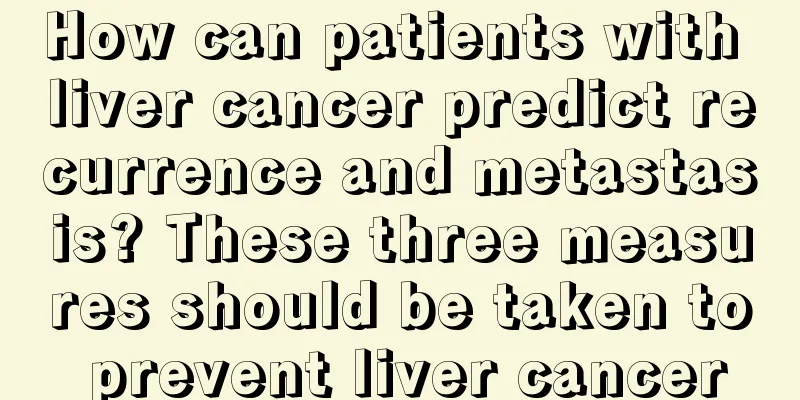The main factors that induce gallbladder cancer

|
The occurrence of gallbladder cancer has a lot to do with people's usual eating habits, especially those who do not eat breakfast. Some people do not pay enough attention to gallbladder cancer, which eventually leads to worsening of the disease. The following is an introduction by experts on the main factors that induce gallbladder cancer . 1. Malformation of the pancreatic-biliary junction. Malformation of the pancreatic-biliary junction, that is, the confluence of the pancreatic-biliary duct is a congenital malformation of the digestive system. The most reasonable explanation for the mechanism of abnormal pancreatic duct confluence causing gallbladder cancer is the reflux of pancreatic juice. The mechanism of pancreatic juice causing gallbladder cancer may be that the lecithin in the bile is hydrolyzed by the phosphate A2 in the pancreatic juice to produce defatted lecithin, which has the effect of damaging the cell membrane. It accumulates in the gallbladder wall and stimulates the gallbladder epithelium, causing epithelial cells to degenerate, atypically proliferate and even become cancerous. This is one of the main factors inducing gallbladder cancer. 2. Gallbladder adenomyosis. Gallbladder adenomyosis is a proliferative disease characterized by hyperplasia of the gallbladder mucosa and muscle layer, forming intramural diverticula, cysts, etc. In the past, it was believed that gallbladder adenomyosis had no possibility of canceration, but in recent years, there have been reports of gallbladder cancer occurring on the basis of gallbladder adenomyosis in Japan, France and other countries. 3. Chronic cholecystitis. Chronic cholecystitis is related to gallbladder cancer. Gallstones, chronic cholecystitis and gallbladder cancer often coexist. Gallbladder mucosa can evolve into carcinoma in situ through metaplasia, hyperplasia or polypoid changes. Studies have shown that the progression time from atypical hyperplasia of the gallbladder to advanced cancer is about 15 years. 4. Gallstones. Gallbladder cancer is closely related to gallstones. In Europe and the United States, 54.3% to 100% of patients with gallbladder cancer have gallstones, while in China, the figure is 20% to 82.6%. From the perspective of gallstones, 1.5% to 6.3% of patients with cholelithiasis have gallbladder cancer. Other studies have shown that the risk of gallbladder cancer in patients with gallstones is 4 to 5 times higher than that in patients without gallstones. The earlier the age of gallstone onset, the greater the risk of gallbladder cancer. The risk of gallbladder cancer in patients with gallstones larger than 1 cm in diameter is 10 times greater than that in patients with gallstones smaller than 1 cm in diameter. 5. Gallbladder adenoma. Gallbladder adenoma is divided into papillary adenoma, tubular adenoma, and tubulopapillary adenoma. Gallbladder adenoma is characterized by pedunculated and solitary, and is now recognized as a precancerous lesion of the gallbladder. It is generally believed that the canceration rate is about 10%. If combined with gallstones, the risk of canceration increases; if the tumor diameter is more than 10mm, the possibility of canceration is high. 6. Female hormones. The 3rd National Cancer Survey in the United States found that the age-adjusted incidence of gallbladder cancer per 100,000 population per year was 1.1 for males and 2.2 for females; while in Japan, it was 0.7 for males and 1.5 for females. Therefore, some people speculate that this may be related to the estrogen level in the body. 7. Industrial carcinogens. Animal experiments show that nitrogen toluene, nitrosamines, etc. can cause gallbladder cancer. 8. Others. The occurrence of gallbladder cancer is also related to age. Primary gallbladder cancer mostly occurs in middle-aged and elderly people aged 50 to 70. Weight exceeding normal by 20% to 30% can increase the risk of gallbladder cancer. Studies have shown that a body mass index greater than or equal to 24 is a high-risk factor for gallbladder cancer. The above is an introduction to the main factors that induce gallbladder cancer. If you want to know more about gallbladder cancer, please consult online experts. For more information, please visit the gallbladder cancer disease special topic at http://www..com.cn/zhongliu/dna/ or consult an expert for free. The expert will then give a detailed answer based on the patient's specific situation. |
<<: Three key points to prevent colon cancer
>>: Precautions for preventing rectal cancer
Recommend
What are the symptoms of Helicobacter pylori infection
I believe everyone has heard of Helicobacter pylo...
Can I drink green tea if I have residual gastric cancer?
Gastric stump cancer refers to gastric cancer tha...
About the method of removing freckles
Spots have become an eye problem that troubles mo...
What are the benefits of pomegranate juice for women
Pomegranate juice is a kind of juice made from po...
There are small particles in the anus
With the improvement of living standards, people&...
Preventing blood transmission of schistosomiasis
Schistosomiasis is a relatively common parasite t...
Lung cancer patients should take the right dietary supplements
Coughing with sputum, fever, hemoptysis, chest pa...
What is palliative surgery for gastric cancer? Relieve the patient's symptoms
The purpose of palliative surgery for gastric can...
If my parents have liver cancer, will it be hereditary?
When seeing liver cancer patients, one of the que...
Three major salivary glands
The three major salivary glands located around th...
What are the main clinical manifestations of gastric cancer patients
Gastric cancer is one of the most common malignan...
What's up with Piff's dry itching
In autumn, because the weather is relatively dry,...
The difference between distilled water and purified water
Every day, we need to replenish 2500 ml of water ...
Is it ok to apply alcohol to the itchy ear
Summer has passed and autumn is upon us. Autumn i...
Chin redness
Since the chin is a triangular area on the face, ...









